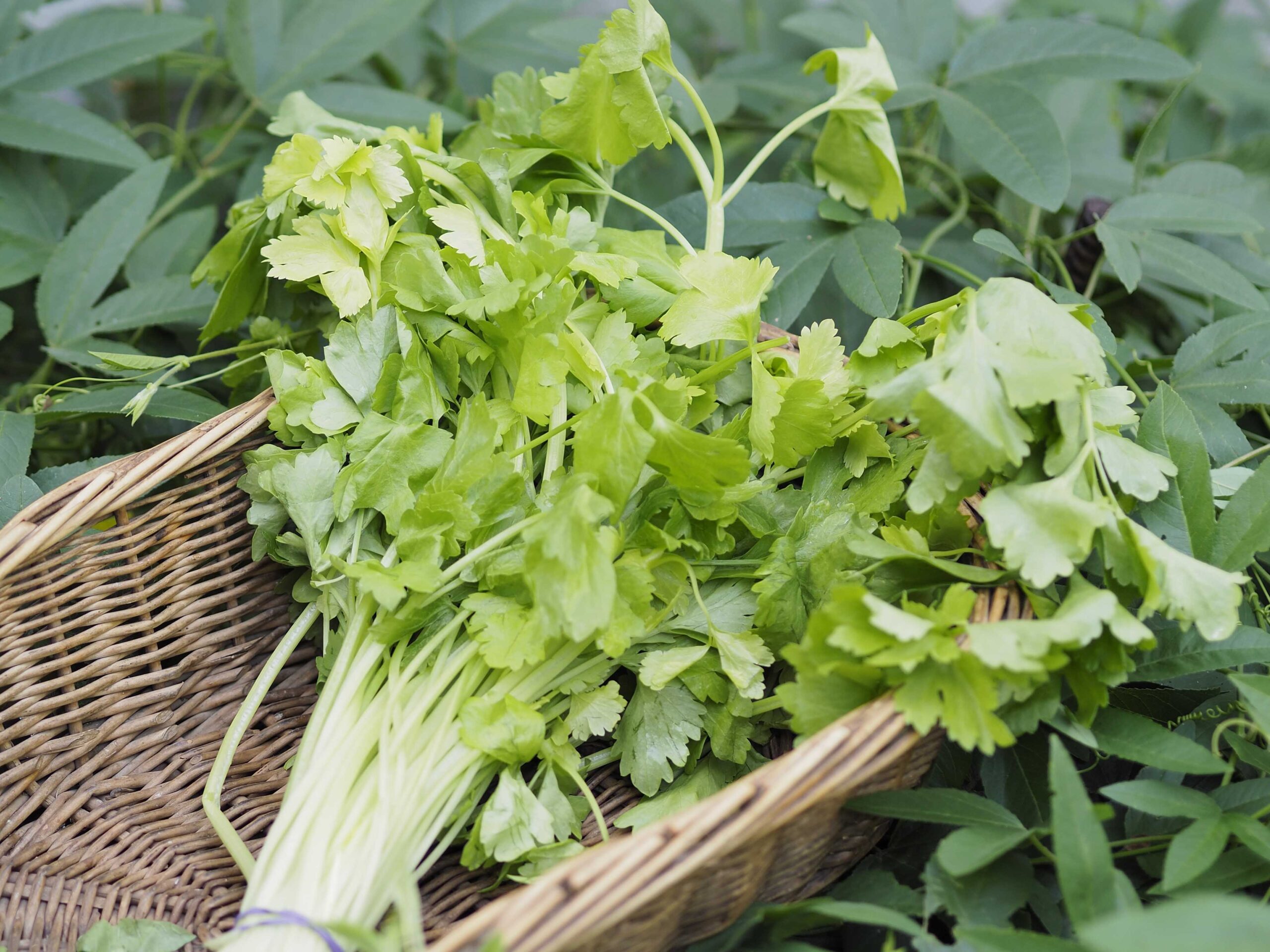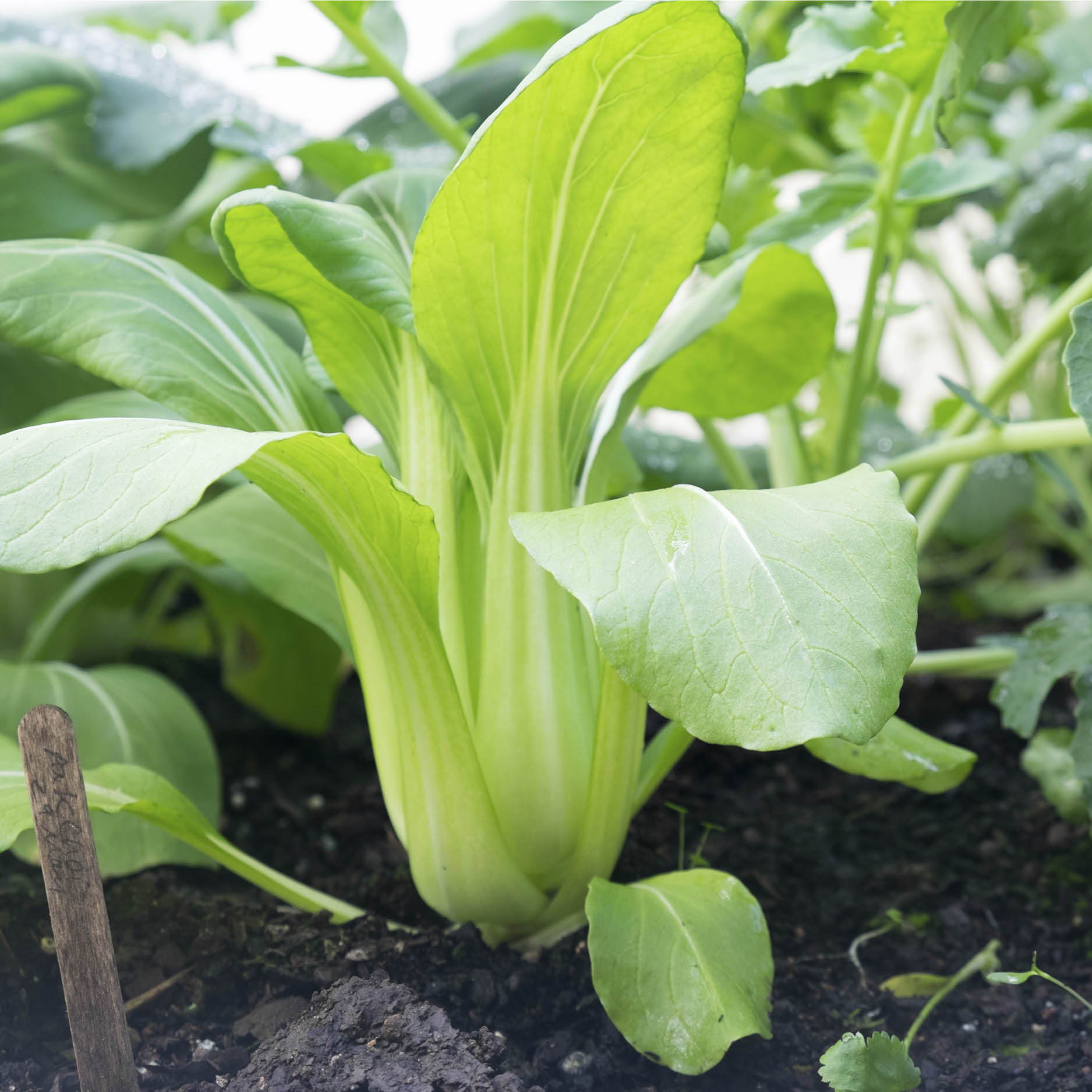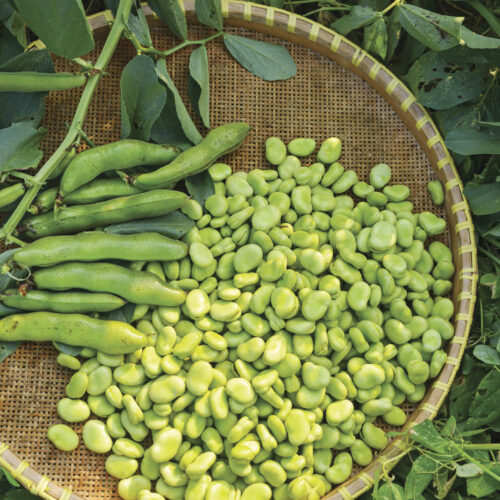Easy Asian greens to grow and eat
2025-03-10T13:04:08+11:00
Asian greens are readily available at local supermarkets these days, but did you know they’re equally at home in a vegie patch?
Tatsoi, bok choy, choy sum, mizuna, ong choy – just a few of the delicious Asian greens common in markets all over Australia and, increasingly, local supermarkets. But did you know they’re equally at home in your own vegie patch?
In my warm Adelaide Hills garden, I can grow different varieties throughout the year simply by giving them a cooler spot in summer, and maximum light in winter. Even if you don’t have a large garden – or even no garden at all – Asian greens are compact enough to thrive in pots or planters on balconies and sunny verandahs. Cultivars with purple or red leaves look terrific massed or as borders. Let a few of these greens flower and you’ll see that bees appreciate them as much as you do.
Although some Asian greens are related to lettuce, celery and other vegetables, most are in the mustard/brassica family (Brassicaceae) with cauliflower and cabbages. However, you don’t need an entire season as you do for those crops, and they’re better adapted to Australia’s climate than are the Northern Hemisphere traditionals.
Instead, most Asian greens are as easy to grow as radishes and one of the fastest vegetables to harvest, with seedlings ready in weeks rather than months.
Even better, instead of harvesting the whole plant, you can, with most, take older leaves as required, often within a month of planting, just as with picking lettuces. I love being able to grab a few leaves to throw into Asian soups, salads and stir-fries at the last moment before serving; you can also steam leaves as a side dish. Classic flavour pairings include: garlic, ginger, chilli and onion, with shrimp paste, sesame oil, and fish, soy or oyster sauces.
Asian greens are also terrific in vegetable juices, with mustardy ones adding a spicy bite.
How to grow
Choose a sunny spot (except in very hot, dry regions/seasons), where shelter from late afternoon summer sun helps prevent leaf scorch. Asian greens need rich soil if they are to be sweet and tender, so add generous amounts of well-rotted manure and compost, as well as a complete balanced fertiliser. It’s almost impossible to add too much nitrogen as you want the leaf growth that it promotes.
You’ll get the largest, best leaves when sowing at the right time for your region (check seed labels) because out-of-season sowings are more likely to bolt, especially in times of lengthening daylight. I do find that a shadier spot slows flower development, but I can still harvest leaves. I’ve not been able to make wombok cabbage form proper heads in my garden’s microclimate, but it still produces plenty of individual leaves.
Homegrown Asian greens often look different to those you buy in the shops but, regardless of their appearance, they’re always tastier! My bok choy generally has a more open rosette than the tight, blanched ones you buy.
Mulch around plants and water regularly – any stress encourages plants to bolt, and leaves can become too bitter.
Seed or seedlings
Most Asian greens germinate easily from seed. Different varieties can be sown at different times of the year, ranging from all year in the north, to three seasons in the south, with enough overlap that you can harvest something in every month. Seed is also the most economical way to buy them. However, many are also available year-round as seedlings in punnets. If buying punnets, it’s important to choose those with the smallest, youngest plants and avoid any that have tall or budding ones, or those that look like they have been stressed, because these will bolt straight to seed without growing harvestable leaves. Look also for punnets containing mixed greens – these are a great way to taste test them when starting out.
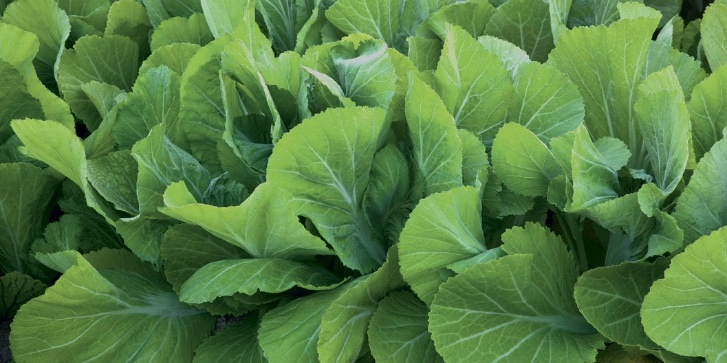
Above: Gai choy (Alamy)
Sow small seeds sparsely in shallow drills and cover with 5mm of sieved, matured compost or seed raising mix. Firm down and water gently. Some people water with Epsom salts to supply the extra magnesium these plants like but mine, with balanced fertiliser added to the soil, have done fine without.
Succession planting
Depending on your appetite, successive sowings every month or so are recommended, but I’m insufficiently disciplined for this and instead mix and match different varieties as well as rather randomly planting both seed and seedlings. Even with this approach, I almost always have a few varieties to pick, and some of the mustards self-seed throughout the vegie patch.
Thin seedlings when large enough to handle: transplanted thinnings mature later than those left in situ, creating your first successive harvest. Harvest outer leaves or the whole plant before elongation or flower spikes develop.
Pests and diseases
Most Asian greens are remarkably pest- and disease- resistant, not least because, as long as you protect them while they’re small, they’re so fast they outgrow most predators! Protect from slugs and snails with diatomaceous earth or traps, and cabbage white butterflies with vegie net or Bt spray.
During summer, I find that vegie net has a secondary role in protecting plants from baking afternoon sun. Grey aphid and white fly occasionally attack plants – spray with Natrasoap or Eco-oil. Fungal diseases are best managed by choosing a more open, well-ventilated planting site.
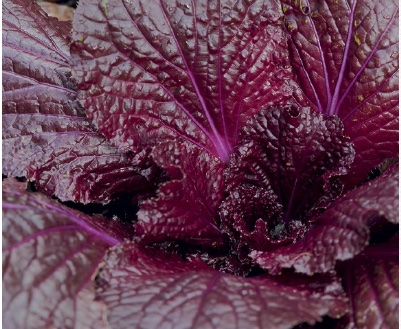
Above: Red wombok (Alamy)
Different types
Try these more unusual types in your garden:
Taiwan lettuce/celtuce (Lactuca sativa var. augustana)
Delicious, slightly bitter leaves ideal for stir fries; primarily grown for the stems. Grow like lettuce.
Chinese celery (Apium graveolens var. secalinum)
Keep plants very well-watered. Use leaves and stems whenever you want a strong celery flavor in soups, stews and stir fries.
Chrysanthemum greens (Glebionis coronaria)
Slightly bitter herbal flavor; excellent steamed, blanched or deep fried in tempura batter.
Fava greens (Vicia faba)
Sweet, buttery texture great raw, steamed, in stir fries or slightly wilted and used like baby spinach. When fully grown plants produce broad beans.
Water spinach or kangkong (Ipomoea aquatica)
Wonderful crunchy stems with a mild nutty flavor, fabulous when stir fried, steamed, or added to soups. Grows well in tropical regions of Australia as a pond or bog plant (but can also be weedy)– try them in large water bowls.
Betel leaf (Piper sarmentosum)
An attractive perennial trailing climber for a warm, well-watered and partly shaded spot in tropical or subtropical gardens.
GROWING IN CONTAINERS
All of the smaller Asian greens (for example, tatsoi, mizuna, bok choy) grow well in containers in full or morning sun and a large bowl of mixed greens looks as terrific as it tastes. Use quality potting mix, add balanced pelletised fertiliser, and liquid feed fortnightly with high- nitrogen compost teas or fish emulsion fertilisers.
You can subscribe to the magazine at ABC Organic Gardener magazine and have eight issues of naturally great ideas delivered to your door!

